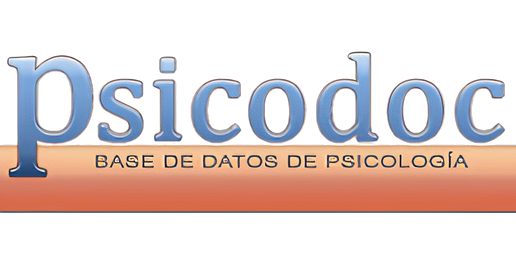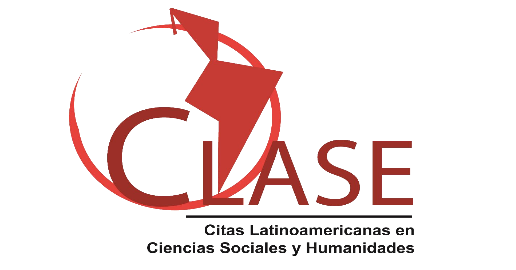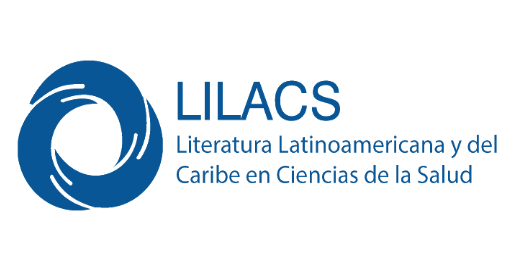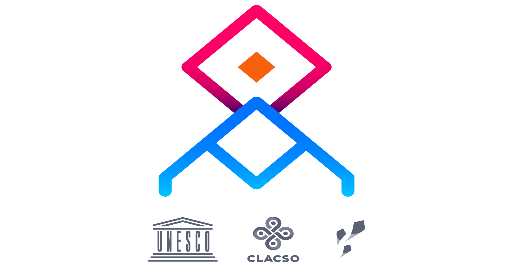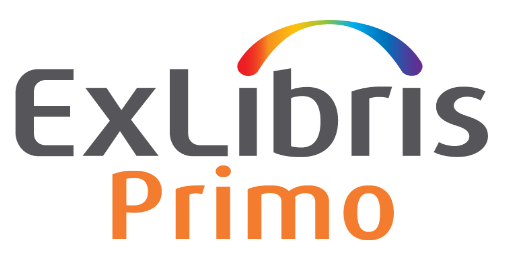
Esta obra está bajo una licencia internacional Creative Commons Atribución-NoComercial-CompartirIgual 4.0.
Los autores que publiquen en esta Revista aceptan las siguientes condiciones:
Acta Colombiana de Psicología se guía por las normas internacionales sobre propiedad intelectual y derechos de autor, y de manera particular el artículo 58 de la Constitución Política de Colombia, la Ley 23 de 1982 y el Acuerdo 172 del 30 de Septiembre de 2010 (Reglamento de propiedad intelectual de la Universidad Católica de Colombia)
Los autores conservan los derechos de autor y ceden a la Revista el derecho de la primera publicación, con el trabajo registrado con la Este obra está bajo una licencia de Creative Commons Reconocimiento-NoComercial-CompartirIgual 4.0 Internacional, que permite a terceros utilizar lo publicado siempre que mencionen la autoría del trabajo y a la primera publicación en esta Revista.
Resumen
Esta investigación analizó las propiedades psicométricas de la versión en portugués de la Escala de Motivación Deportiva II (SMS-II) entre participantes juveniles brasileños de deportes de equipo. El estudio 1 incluyó a 590 participantes deportivos (Medad = 14.92 años; DE = 1.68). Dentro de este estudio, de los seis modelos probados, solo los modelos de seis y cinco factores (sin la subescala de regulación introyectada) mostraron índices de ajuste aceptables. Además, las intercorrelaciones entre las subescalas sustentaron la idea de un simplex similar dentro del SMS-II. El estudio 2 incluyó a 173 participantes deportivos (Medad = 12.96; DE = 0.91) que completaron el SMS-II y la Escala de Pasión. Este estudio proporcionó evidencia de validez con base en la relación con medidas externas, mostrando correlaciones más altas entre formas de motivación más autodeterminadas y pasión armoniosa y entre formas de motivación menos autodeterminadas con pasión obsesiva. En los estudios 1 y 2, se identificaron algunos problemas con la confiabilidad interna de las subescalas del SMS-II. En general, se descubrió que el SMS-II requiere un mayor refinamiento.
Palabras clave

Citas
Amemiya, R., & Sakairi, Y. (2019). The Effects of Passion and Mindfulness on the Intrinsic Motivation of Japanese Athletes. Personality and Individual Differences, 142, 132–138. https://doi.org/10.1016/j.paid.2019.01.006
Ato, M., Lopez, J. J., & Benavente, A. (2013). A classification system for research designs in psychology. Anales de Psicología, 29(3), 1038–1059. http://dx.doi.org/10.6018/analesps.29.3.178511
Balaguer, I., Castillo, I., Cuevas, R., & Atienza, F. (2018). The Importance of Coaches’ Autonomy Support in the Leisure Experience and Well-being of Young Footballers. Frontiers in Psychology, 9(840), 1–9. https://doi.org/10.3389/fpsyg.2018.00840
Bara Filho, M., Andrade, D., Miranda, R., Núñez, J. L., Martín-Albó, J., & Ribas, P. R. (2011). Preliminary val¬idation of a Brazilian version of the sport motivation scale. Universitas Psychologica, 10(2), 557–566. https://doi.org/10.11144/Javeriana.upsy10-2.pvbv
Bollen, K. A., & Stine, R. A. (1992). Bootstrapping Goodness-of-Fit Measures in Structural Equation Models. Socio¬logical Methods & Research, 21(2), 205–229. https://doi.org/10.1177/0049124192021002004
Brière, N. M., Vallerand, R. J., Blais, M. R., & Pelletier, L. G. (1995). Développement et Validation d’une Mesure de Motivation Intrinsèque, Extrinsèque et d’Amotivation en Contexte Sportif: L’Échelle de Motivation dans les Sports (ÉMS). International Journal of Sport Psychology, 26(4), 465–489.
Bruner, M. W., Eys, M. A., Wilson, K. S., & Côté, J. (2014). Group cohesion and positive youth development in team sport athletes. Sport, Exercise, and Performance Psychology, 3(4), 219–227. https://doi.org/10.1037/spy0000017
Burtscher, J., Furtner, M., Sachse, P., & Burtscher, M. (2011). Validation of a German version of the Sport Motivation Scale (SMS28) and motivation analysis in competitive mountain runners. Perceptual and Motor Skills, 112(3), 807–820. https://doi.org/10.2466/05.06.25.PMS.112.3.807-820
Chantal, Y., Guay, F., Dobreva-Martinova, T., & Vallerand, R. J. (1996). Motivation and elite performance: An explor¬atory investigation with Bulgarian athletes. International Journal of Sport Psychology, 27(2), 173–182.
Chatzisarantis, N., Hagger, M., Biddle, S., Smith, B., &Wang, J. C. K. (2003). A meta-analysis of perceived locus of causality in exercise, sport, and physical education contexts. Journal of Sport and Exercise Psychology, 25, 284–306. https://doi.org/10.1123/jsep.25.3.284
Clancy, R. B., Herring, M. P., & Campbell, M. J. (2017). Motivation measures in sport: A critical review and bibliometric analysis. Frontiers in Psychology, 8, 348. https://doi.org/10.3389/fpsyg.2017.00348
Comrey, A. L., & Lee, H. B. (1992). A First Course in Factor Analysis (2nd ed.). Erlbaum.
Costa, V. T., Albuquerque, M. R., Lopes, M. C., Noce, F., da Costa, I. T., Ferreira, R. M., & Samulski, D. M. (2011). Vali¬dação da escala de motivação no esporte (SMS) no futebol para a língua portuguesa brasileira [Validation of the motivation scale in sport (SMS) in football for the Brazilian Portuguese language]. Revista Brasileira de Educação Física e Esporte, 25(3), 537–546. https://doi.org/10.1590/S1807-55092011000300015
Curran, T., Appleton, P. R., Hill, A. P., & Hall, H. K. (2011). Passion and burnout in elite junior soccer players: The mediating role of self-determined motivation. Psychology of Sport and Exercise, 12(6), 655–661. https://doi.org/10.1016/j.psychsport.2011.06.004
Deci, E. L., & Ryan, R. M. (2012). Motivation, personality, and development within embedded social contexts: An overview of self-determination theory. In R. M. Ryan (Ed.), The Oxford handbook of human motivation (pp. 85–107). Oxford University Press. https://doi.org/10.1093/oxfordhb/9780195399820.013.0006
DeVellis, R. F. (2011). Scale development: Theory and Applications (Vol. 26) (3rd ed.). Sage.
Doganis, G. (2000). Development of a Greek version of the Sport Motivation Scale. Perceptual and Motor Skills, 90(2), 505–512. https://doi.org/10.2466/pms.2000.90.2.505
Donahue, E. G., Rip, B., & Vallerand, R. J. (2009). When winning is everything: On passion, identity, and aggression in sport. Psychology of Sport and Exercise, 10(5), 526–534. https://doi.org/10.1016/j.psychsport.2009.02.002
Drake, K. M., Beach, M. L., Longacre, M. R., MacKenzie, T., Titus, L. J., Rundle, A. G., & Dalton, M. A. (2012). Influence of sports, physical education, and active commuting to school on adolescent weight status. Pediatrics, 130(2), 296–304. https://doi.org/10.1542/peds.2011-2898
Eime, R. M., Young, J. A., Harvey, J. T., Charity, M. J., & Payne, W. R. (2013). A systematic review of the psychological and social benefits of participation in sport for children and adolescents: Informing development of a con¬ceptual model of health through sport. International Journal of Behavioral Nutrition and Physical Activity, 10(1), 98–119. https://doi.org/10.1186/1479-5868-10-98
Eys, M. A., Carron, A. V., Bray, S. R., & Brawley, L. R. (2007). Item wording and internal consistency of a measure of cohesion: The Group Environment Questionnaire. Journal of Sport and Exercise Psychology, 29(3), 395–402. https://doi.org/10.1123/jsep.29.3.395
Guay, F., Vallerand, R. J., & Blanchard, C. (2000). On the assessment of situational intrinsic and extrin¬sic motivation: The Situational Motivation Scale (SIMS). Motivation and Emotion, 24(3), 175–213. https://doi.org/10.1023/A:1005614228250
Hagger, M. S., & Chatzisarantis, N. L. D. (Eds.). (2007). Intrinsic motivation and self-determination in exercise and sport. Human Kinetics. https://doi.org/10.5040/9781718206632
Hair, J. F., Black, W. C., Babin, B. J., & Anderson, R. E. (2019). Multivariate data analysis (8th ed.). Cencage.
Haukoos, J. S., & Lewis, R. J. (2005). Advanced Statistics: Bootstrapping Confidence Intervals for Statistics with “Dif¬ficult” Distributions. Academic Emergency Medicine, 12(4), 360–365. https://doi.org/10.1197/j.aem.2004.11.018
Holt, N. L., Neely, K. C., Slater, L. G., Camiré, M., Côté, J., Fraser-Thomas, J., MacDonald, D., Strachan, L., & Tamminen, K. A. (2017). A grounded theory of positive youth development through sport based on results from a qualitative meta-study. International Review of Sport and Exercise Psychology, 10(1), 1–49. https://doi.org/10.1080/1750984X.2016.1180704
Hu, L., & Bentler, P. M. (1999). Cutoff criteria for fit indexes in covariance structure analysis: Conventional criteria versus new alternatives. Structural Equation Modeling, 6, 1–55. https://doi.org/10.1080/10705519909540118
Jackson, S. A., & Marsh, H. W. (1996). Development and Validation of a Scale to Measure Optimal Experience: The Flow State Scale. Journal of Sport & Exercise Psychology, 18, 17–35. https://doi.org/10.1123/jsep.18.1.17
Jõesaar, H., Hein, V., & Hagger, M. S. (2012). Youth athletes’ perception of autonomy support from the coach, peer motivational climate and intrinsic motivation in sport setting: One-year effects. Psychology of Sport and Exercise, 13(3), 257–262. https://doi.org/10.1016/j.psychsport.2011.12.001
Johnston, J., Harwood, C., & Minniti, A. M. (2013). Positive youth development in swimming: Clarification and consensus of key psychosocial assets. Journal of Applied Sport Psychology, 25(4), 392–411. https://doi.org/10. 1080/10413200.2012.747571
Langan, E., Hodge, K., McGowan, S., Carney, S., Saunders, V., & Lonsdale, C. (2016). The influence of controlled motivation alongside autonomous motivation: Maladaptive, buffering, or additive effects? International Journal of Sport and Exercise Psychology, 14(1), 57–71. https://doi.org/10.1080/1612197X.2015.1016084
Li, C., Kawabata, M., & Zhang, L. (2018). Validity and reliability of the Sport Motivation Scale-II for Chinese athletes. International Journal of Sport and Exercise Psychology, 16(1), 51–64. https://doi.org/10.1080/1612197X.2016.1153130
Lonsdale, C., Hodge, K., & Rose, E. A. (2008). The Behavioral Regulation in Sport Questionnaire (BRSQ): Instrument development and initial validity evidence. Journal of Sport and Exercise Psychology, 30(3), 323–355. https://doi. org/10.1123/jsep.30.3.323
Lonsdale, C., Hodge, K., Hargreaves, E. A., & Ng, J. Y. (2014). Comparing sport motivation scales: A response to Pel¬letier et al. Psychology of Sport and Exercise, 15(5), 446–452. https://doi.org/10.1016/j.psychsport.2014.03.006
Mallett, C., Kawabata, M., & Newcombe, P. (2007). Progressing measurement in sport motivation with the SMS-6: A response to Pelletier, Vallerand, and Sarrazin. Psychology of Sport and Exercise, 8(5), 622–631. https://doi.org/10.1016/j.psychsport.2007.05.001
Manouchehri, J., Tojari, F., & Soltanabadi, S. (2015). Validity and reliability of measurement instrument for sport motivation scale in professional athletes in team sports of Iran. African Journal of Psychiatry, 18(2), 2–5. https:// doi.org/10.4172/Psychiatry.1000253
Marsh, H. W., Hau, K. T., & Wen, Z. (2004). In search of golden rules: Comment on hypothesis-testing approaches to setting cutoff values for fit indexes and dangers in overgeneralizing Hu and Bentler’s (1999) findings. Structural Equation Modeling, 11(3), 320–341. https://doi.org/10.1207/s15328007sem1103_2
McAuley, E., Duncan, T., & Tammen, V. V. (1989). Psychometric properties of the Intrinsic Motivation Inventory in a competitive sport setting: A confirmatory factor analysis. Research Quarterly for Exercise and Sport, 60(1), 48–58. https://doi.org/10.1080/02701367.1989.10607413
Monteiro, D., Teixeira, D. S., Travassos, B., Duarte-Mendes, P., Moutão, J., Machado, S., & Cid, L. (2018). Perceived effort in football athletes: the role of achievement goal theory and self-determination theory. Frontiers in Psychology, 9(1575), 1–13. https://doi.org/10.3389/fpsyg.2018.01575
Nascimento, J., Vissoci, J., Lavallee, D., Codonhato, R., Nascimento, J. V. do, & Vieira, L. F. (2017). The mediating role of basic needs satisfaction on the relationship of perfectionism traits and team cohesion among elite futsal athletes. International Journal of Sport Psychology, 48(6), 591–609. https://dspace.stir.ac.uk/handle/1893/24975
Nascimento Junior, J. R. A. do, Fortes, L. de S., Freire, G. L. M., Oliveira, D. V. de, Fiorese, L., & Cronin, L. D. (2019). Cross-Cultural Adaptation and Psychometric Properties of the Portuguese Version of the Life Skills Scale for Sport. Measurement in Physical Education and Exercise Science, 24(1), 11–24. https://doi.org/10.1080/10913 67X.2019.1647208
Nascimento Junior, J. R. A. do, Vissoci, J. R. N., Balbim, G. M., Moreira, C. R., Pelletier, L. G., & Vieira, L. F. (2014). Adaptação transcultural e análise das propriedades psicométricas da Sport Motivation Scale-II no contexto brasileiro [Cross-cultural adaptation and analysis of the psychometric properties of Sport Motivation Scale- II in the Brazilian context]. Journal of Physical Education, 25(3), 441–458. https://doi.org/10.4025/reveducfis. v25i3.24855
Ntoumanis, N., & Standage, M. (2009). Morality in sport: A self-determination theory perspective. Journal of Applied Sport Psychology, 21(4), 365–380. https://doi.org/10.1080/10413200903036040
Nunnally, J. C., & Bernstein, I. H. (1994). The Assessment of Reliability. Psychometric Theory, 3, 248–292.
Núñez, J. L., Martín-Albo, J., Navarro, J. G., & González, V. M. (2006). Preliminary validation of a Spanish version of the Sport Motivation Scale. Perceptual and Motor Skills, 102(3), 919–930. https://doi.org/10.2466/pms.102.3.919-930
Opstoel, K., Chapelle, L., Prins, F. J., De Meester, A., Haerens, L., van Tartwijk, J., & Martelaer, K. (2019). Personal and social development in physical education and sports: A review study. European Physical Education Review, 26(4), 797–813. https://doi.org/10.1177/1356336X19882054
Paic, R., Kajos, A., Meszler, B., & Prisztóka, G. (2017). Validation of the Hungarian Sport Motivation Scale (H-SMS). Cognition, Brain, Behavior, 21(4), 275–291. https://doi.org/10.24193/cbb.2017.21.17
Peixoto, E. M., Nakano, T. D. C., Castillo, R. A., Oliveira, L. P., & Balbinotti, M. A. A. (2019). Passion scale: Psychometric properties and factorial invariance via exploratory structural equation modeling (ESEM). Paidéia (Ribeirão Preto), 29, e2911. https://doi.org/10.1590/1982-4327e2911
Pelletier, L. G., Rocchi, M., Guertin, C., Hébert, C., & Sarrazin, P. (2019). French adaptation and validation of the Sport Motivation Scale-II (Echelle de Motivation dans les Sports-II). International Journal of Sport and Exercise Psychology, 17(3), 232–249. https://doi.org/10.1080/1612197X.2017.1339729
Pelletier, L. G., Rocchi, M. A., Vallerand, R. J., Deci, E. L., & Ryan, R. M. (2013). Validation of the revised sport motivation scale (SMS-II). Psychology of Sport and Exercise, 14(3), 329–341. https://doi.org/10.1016/j.psychsport.2012.12.002
Pelletier, L. G., Tuson, K. M., Fortier, M. S., Vallerand, R. J., Briere, N. M., & Blais, M. R. (1995). Toward a new measure of intrinsic motivation, extrinsic motivation, and amotivation in sports: The Sport Motivation Scale (SMS). Journal of Sport and Exercise Psychology, 17(1), 35–53. https://doi.org/10.1123/jsep.17.1.35
Pineda-Espejel, H. A., Meza, E. I. A., Ruiz, Z. L., Trejo, M., & López, C. A. C. (2016). Propiedades psicométricas de la Escala de Motivación en el Deporte revisada (SMS-II) adaptada al español hablado en México [Psychometric properties of the revised Sport Motivation Scale (SMS-II) adapted to the Spanish spoken in Mexico]. Revista Internacional de Ciencias del Deporte, 12(44), 107–120. http://dx.doi.org/10.5232/ricyde2016.04402
Podlog, L., Gustafsson, H., Skoog, T., Gao, Z., Westin, M., Werner, S., & Alricsson, M. (2015). Need satisfaction, mo¬tivation, and engagement among high-performance youth athletes: A multiple mediation analysis. Inter¬national Journal of Sport and Exercise Psychology, 13(4), 415–433. https://doi.org/10.1080/1612197X.2014.999346
Rodrigues, F., Pelletier, L., Rocchi, M., Cid, L., Teixeira, D., & Monteiro, D. (2021). Adaptation and validation of a Portuguese version of the Sports Motivation Scale-II (SMS-II-P) showing invariance for gender and sport type. Perceptual and Motor Skills, 128(6), 2669–2687. https://doi.org/10.1177/00315125211039362
Roszkowki, M. J., & Soven, M. (2010). Shifting gears: Consequences of including two negatively worded items in the middle of a positively worded questionnaire. Assessment & Evaluation in Higher Education, 35(1), 113–130. https://psycnet.apa.org/doi/10.1080/02602930802618344
Rottensteiner, C., Tolvanen, A., Laakso, L., & Konttinen, N. (2015). Youth athletes’ motivation, perceived competence, and persistence in organized team sports. Journal of Sport Behavior, 38(4), 432–449.
Ruffault, A., Bernier, M., Juge, N., & Fournier, J. F. (2016). Mindfulness may moderate the relationship between intrinsic motivation and physical activity: A cross-sectional study. Mindfulness, 7(2), 445–452. https://doi. org/10.1007/s12671-015-0467-7
Ryan, R. M., & Deci, E. L. (2017). Self-determination theory: Basic psychological needs in motivation, development, and wellness. Guilford Publications. https://doi.org/10.1521/978.14625/28806
Ryan, R. M., & Reeve, J. (2024). Intrinsic motivation, psychological needs, and competition: a self-determination theory analysis. In S. M. Garcia, A. Tor, & A. J. Elliot (Eds.), The Oxford Handbook of the Psychology of Competition (pp. 240–283). Oxford University Press. https://doi.org/10.1093/oxfordhb/9780190060800.013.10
Sarrazin, P., Vallerand, R., Guillet, E., Pelletier, L., & Cury, F. (2002). Motivation and dropout in female handballers: A 21‐month prospective study. European Journal of Social Psychology, 32(3), 395–418. https://doi.org/10.1002/ejsp.98
Serpa, S., Alves, P., & Barreiros, A. (2004). Versão portuguesa da Sport Motivational Scale (SMS) e da Sport Academic Scale (AMS): processos de tradução, adaptação e fiabilidade [Portuguese version of Sport Motivational Scale (SMS) and Sport Academic Scale (AMS): Translation, Adaptation and reliability processes]. Universidade Técnica de Lisboa.
Sheehy, T., & Hodge, K. (2015). Motivation and morality in master’s athletes: A self-determination theory per¬spective. International Journal of Sport and Exercise Psychology, 13(3), 273–285. https://doi.org/10.1080/16121 97X.2014.956326
Standage, M. (2023). Self-determination theory applied to sport. In R. M. Ryan (Ed.), The Oxford Handbook of Self-Determination Theory (pp. 701–723). Oxford University Press. https://doi.org/10.1093/oxford¬hb/9780197600047.013.35
Stenling, A., Ivarsson, A., Johnson, U., & Lindwall, M. (2015). Bayesian structural equation modeling in sport and exer¬cise psychology. Journal of Sport and Exercise Psychology, 37(4), 410–420. https://doi.org/10.1123/jsep.2014-0330
Tabachnick, B. G., & Fidell, L. S. (2013). Using multivariate statistics (6th ed.). Pearson Education Inc.
Watson, D., & Clark, L. A. (1997). Measurement and mismeasurement of mood: Recurrent and emergent issues. Jour¬nal of Personality Assessment, 68(2), 267–296. https://doi.org/10.1207/s15327752jpa6802_4
Vallerand, R. J., & Miquelon, P. (2007). Passion for Sport in Athletes. In S. Jowette & D. Lavallee (Eds.), Social Psychology in Sport (pp. 249–263). Human Kinetics. https://doi.org/10.5040/9781492595878.ch-018
Vallerand, R. J., Blanchard, C., Mageau, G. A., Koestner, R., Ratelle, C., Léonard, M., Gagné, M., & Marsolais, J. (2003). Les passions de l’ame: On obsessive and harmonious passion. Journal of Personality and Social Psychology, 85(4), 756–767. http://dx.doi.org/10.1037/0022-3514.85.4.756
Viciana, J., Mayorga-Vega, D., & Blanco, H. (2014). Relationship of age and experience on physical self-concept and sportsmanship orientation in youth Spanish soccer players. International Journal of Sport Psychology, 45(3), 214–230.















